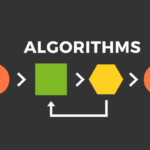Algorithms Handbook for Professionals is an essential resource for software developers, computer scientists, and engineers seeking to deepen their understanding of algorithmic principles. This comprehensive guide covers foundational algorithms, optimization techniques, data structures, and advanced problem-solving strategies. Whether you’re preparing for a technical interview, tackling complex projects, or aiming to refine your coding skills, this book serves as your go-to reference for mastering algorithms in professional applications.
Algorithms Handbook for Professionals

Algorithms Handbook for Professionals
16.8 Credits
Algorithms Handbook for Professionals
16.8 CreditsVendor Information
- Store Name: Study At Homes
- Vendor: Study At Homes
-
Address:
10 Buck Way, Broadbridge Heath, Horsham, West Sussex
West Sussex
England
RH12 3UH - No ratings found yet!

Algorithms Handbook for Professionals
16.8 CreditsAlgorithms form the backbone of modern computing, influencing everything from search engines and social networks to financial modeling and artificial intelligence. Understanding how algorithms work and when to use them is a critical skill for any professional in the tech industry. Algorithms Handbook for Professionals is a meticulously crafted resource designed to provide readers with a deep and practical understanding of algorithmic concepts, ensuring they are equipped to solve real-world problems efficiently and effectively.
Chapter Breakdown
- Foundations of Algorithms The book begins with a strong foundation in algorithmic basics, introducing concepts like time complexity, space complexity, and the importance of Big-O notation. Through clear explanations and practical examples, readers will learn how to evaluate and compare algorithms, ensuring they select the most efficient solution for a given problem.
- Essential Data Structures Data structures are the building blocks of algorithms. This chapter dives into arrays, linked lists, stacks, queues, trees, and graphs. Each data structure is explored in depth, complete with use cases, advantages, and implementation details. The book emphasizes how to leverage these structures to build efficient algorithms.
- Sorting and Searching Algorithms Sorting and searching are fundamental operations in computer science. This section covers popular algorithms like QuickSort, MergeSort, and Binary Search. It also explores advanced techniques such as Radix Sort and Ternary Search, highlighting their use cases and performance trade-offs.
- Dynamic Programming Dynamic programming is a powerful technique for solving complex problems by breaking them into simpler subproblems. Readers will learn how to identify dynamic programming problems and construct solutions step by step. Examples include the Knapsack problem, Fibonacci sequence, and Longest Common Subsequence.
- Graph Algorithms Graphs are ubiquitous in computing, representing everything from social networks to transportation systems. This chapter delves into graph traversal algorithms like Depth-First Search (DFS) and Breadth-First Search (BFS), as well as shortest path algorithms like Dijkstra’s and Bellman-Ford. Advanced topics include Minimum Spanning Trees and network flow algorithms.
- Greedy Algorithms Greedy algorithms provide quick solutions to optimization problems by making locally optimal choices. The book discusses when and why greedy approaches work, featuring problems like Huffman Encoding, Activity Selection, and Kruskal’s algorithm.
- Backtracking and Recursion Backtracking and recursion are essential techniques for exploring solution spaces. This chapter introduces readers to solving puzzles and combinatorial problems, such as the N-Queens problem and Sudoku solver. It also includes strategies for optimizing recursive algorithms.
- Advanced Topics For readers looking to go beyond the basics, this chapter explores cutting-edge topics like machine learning algorithms, parallel computing, and quantum algorithms. The book connects theoretical principles with real-world applications, demonstrating how advanced algorithms shape modern technology.
Features of the Book
- Practical Examples: Every algorithm is accompanied by detailed examples and real-world scenarios to illustrate its applications.
- Step-by-Step Explanations: The book’s intuitive approach ensures that even complex topics are explained clearly and systematically.
- Code Implementations: Algorithms are presented with pseudocode and implementations in popular programming languages like Python and C++.
- Visual Aids: Diagrams and flowcharts make abstract concepts easy to understand and apply.
- Interview Preparation: Special sections focus on common algorithmic questions asked in technical interviews, helping readers excel in their career advancement.
Who Is This Book For?
This handbook is designed for:
- Software Developers: Professionals looking to improve their coding efficiency and tackle challenging tasks.
- Students: Computer science students preparing for exams or competitive programming contests.
- Researchers and Engineers: Individuals involved in solving high-level problems in data science, machine learning, and artificial intelligence.
- Tech Enthusiasts: Anyone passionate about understanding the logic behind everyday technologies.
Real-World Applications
The book’s practical orientation ensures readers can apply their knowledge to various domains, such as:
- Web Development: Optimizing database queries and user interfaces.
- Data Science: Processing large datasets and creating predictive models.
- Game Development: Designing AI behaviors and efficient graphics rendering.
- Cybersecurity: Building encryption and decryption algorithms.
- Operations Research: Solving logistical problems in transportation and supply chains.
Why Choose This Handbook?
Algorithms Handbook for Professionals is more than just a reference; it’s a comprehensive learning tool that grows with you. Whether you’re a beginner starting your journey or a seasoned professional refining your expertise, this book provides a structured path to mastery. Its focus on both theory and application ensures you’re prepared to face algorithmic challenges in academic, professional, and personal projects.
Conclusion
In the fast-paced world of technology, staying ahead requires constant learning and adaptation. Algorithms Handbook for Professionals empowers readers to navigate the complexities of algorithm design and implementation, making it an indispensable companion for anyone serious about a career in technology. With this book, you’ll not only master algorithms but also gain the confidence to apply them creatively and effectively in any field.
















